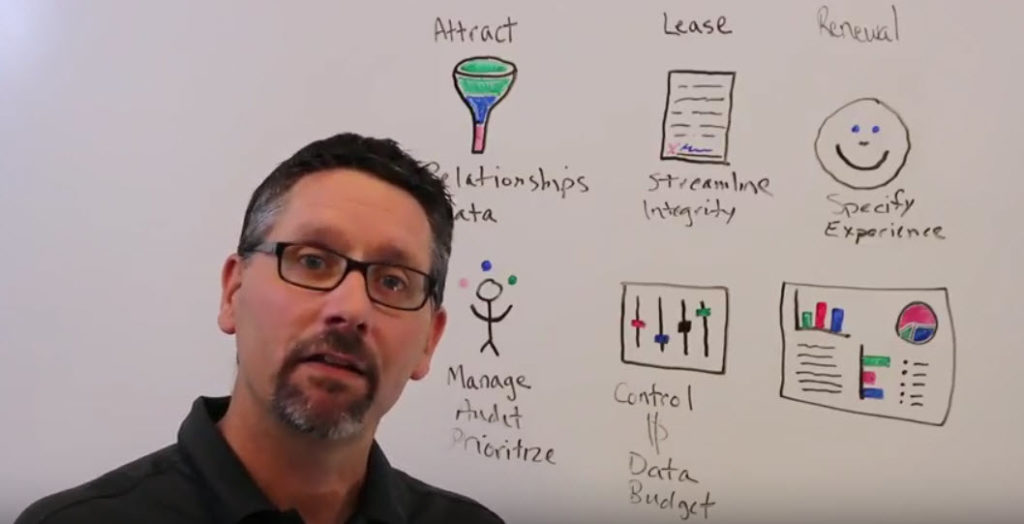Today we continue our 7-part series on effective commercial property management. Andy Welkley discusses the variables you can control to make your property as efficient and profitable as possible, as well as preparation for those variables you cannot control.
Video Transcription
Andy Welkley: Hey there, everybody. It’s Andy Welkley. It’s time for another edition of Whiteboard Wednesday. It’s time for our fifth stop on the journey through commercial property management. Today, we’re going to talk about control. In every business, there are variables that you can control to make your business as efficient and as productive as possible. There are also variables in the environment that you don’t have control over. You need to be able to anticipate those and prepare for whatever happens along the way.
There are a few ways that you can prepare for this. The first one is financial. Financial control really describes how you look at your business from a financial perspective. How do you manage the way you do accounts payable, accounts receivable? How do you report out on those things into your organization and really make sure that you’re accomplishing these things in the most productive and efficient way possible?
The second thing that drives that is the data that you have available. Data integrity is really critical as we look to control our business. Not just from a compliance perspective, but also from an accuracy perspective, as well. We want to make sure we know who is adding data into your system. We want to know who sees it. Is the data secure from an overall perspective? All these things are really critical to the overall integrity of that data and your ability to manage your business and get a good accurate view on a regular basis.
The next thing I want to think about is the budgeting process. We want to make into consideration what might happen in the future, how we think our business will perform so that we can structure a budget that looks out into the future. Maybe it’s one year, three years, five years. Again, this is part of the process where we want to anticipate things within our environment based on what we know now.
We’re then able to make decisions around costs, around investments that are driven by our understanding of what we think might happen. Then we can go back and measure against them. All these things play into our ability to influence those variables that we can control. Also, at the same time look out into the future and prepare effectively for the things that we can’t see coming. We’ve got one more to go. We’ll see you next week for our last edition of Whiteboard Wednesday on commercial property management. Thanks very much.
